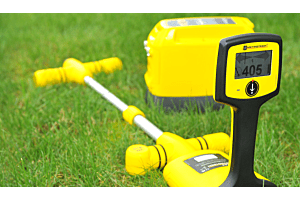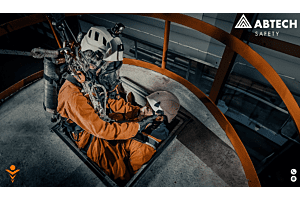
Introduction to the Safety Benefits of Cable Locators
Cable locators are indispensable tools in the realm of underground construction projects. They serve as the eyes beneath the surface, helping to locate underground utilities like electrical lines, gas pipes, and water mains. By doing so, they significantly minimize the risks associated with accidental strikes on these utilities, thereby ensuring a safer work environment. In this comprehensive guide, we'll delve into the numerous safety benefits of using cable locators, explore various utility locating techniques, and offer tips to avoid costly mistakes.
Advantages and Disadvantages of Underground Utility Locating Techniques
Traditional Methods of Locating
Traditional methods, such as using maps or manual probing, are often fraught with inaccuracies. They rely heavily on human judgment, which can lead to human error and potential hazards.
Advanced Techniques and Technologies
Modern cable locators use advanced technologies like electromagnetic fields (EM fields) and ground-penetrating radar to provide more accurate and reliable results. These methods significantly reduce the risks associated with underground utility location, although they may require specialized training to operate effectively.
Toneable Cable: Applications and Benefits
Toneable cables are a game-changer in the world of cable locators. These specially designed cables have a built-in tone wire that emits a specific frequency, making it easier for cable locators to identify them. The use of toneable cables not only enhances the accuracy of utility location but also speeds up the process, contributing to overall project efficiency.
Importance of Calibration in Cable Locators
Calibration is crucial for the accurate functioning of cable locators. An improperly calibrated device can lead to false readings, increasing the risk of accidental utility strikes. Regular calibration ensures that the device operates within the optimal range, providing reliable results that contribute to worksite safety.
Tips to Avoid Costly Mistakes in Underground Cable Locating Services
- Double-Check Readings: Always double-check the readings from your cable locator to ensure accuracy. A second look can prevent costly mistakes.
- Cross-Reference with Utility Maps: Before you start digging, cross-reference your cable locator's readings with any available utility maps to confirm the location of underground utilities.
- Regular Calibration: Keep your cable locator calibrated to ensure it's providing the most accurate information, reducing the risk of accidental utility strikes.
- Use Multiple Methods: Don't rely solely on one method or technology for locating utilities. Using multiple methods can provide a more comprehensive understanding of what's underground.
- Consult Experienced Personnel: When in doubt, consult with experienced utility locators or engineers who can provide expert advice, reducing the risk of errors.
- Follow Safety Protocols: Always adhere to safety guidelines and protocols when performing underground utility locating to minimize risks.
- Documentation: Keep thorough records of all utility locations and any discrepancies between the locator readings and utility maps. This can be invaluable for future projects or in case of legal issues.
- Test Before Digging: If possible, perform a small, controlled test dig to confirm the utility locations before proceeding with the full excavation.
Top 10 Safety Hazards Associated with Utility Locators and Mitigation Measures
- Electrical Shocks from Live Wires: Always ensure the cable locator is calibrated accurately to detect live wires and avoid electrical shocks.
- Gas Leaks from Damaged Pipelines: Use cable locators to accurately identify the location of gas pipelines to prevent accidental strikes that could lead to leaks.
- Water Main Bursts: Accurate utility location can prevent accidental ruptures of water mains, which can cause flooding and other hazards.
- Chemical Leaks: Some underground utilities contain hazardous chemicals. Accurate detection is crucial to avoid rupturing these lines.
- Explosions: Striking a gas line can lead to catastrophic explosions. Always use a cable locator to identify these lines before digging.
- Fires: Accidental strikes on electrical lines can cause fires. Ensure your cable locator is calibrated to detect all types of electrical lines.
- Injury from Flying Debris: Striking a utility can cause flying debris, posing a risk to workers. Accurate utility location minimizes this risk.
- Environmental Hazards: Leaking utilities can contaminate the soil and water. Use cable locators to avoid striking these utilities.
- Utility Service Disruptions: Striking a utility line can disrupt services like electricity and water supply, affecting surrounding communities.
- Legal Consequences: Failure to locate utilities accurately can lead to legal penalties. Always use calibrated and reliable cable locators to mitigate this risk.
Understanding and Using Underground Cable Locators
Types of Cable Locators
Understanding the different types of cable locators is the first step in optimizing your utility location process. There are primarily two types:
- Electromagnetic Locators: These are the most common and use electromagnetic fields to detect utilities. They are generally easier to use but may require frequent calibration.
- Ground Penetrating Radar (GPR): These use radar pulses to image the subsurface. They are highly accurate but can be more expensive and require specialized training.
Quality Matters
Always opt for high-quality cable locators from reputable manufacturers. While the initial investment may be higher, the long-term benefits in terms of accuracy and reliability can significantly outweigh the costs.
Calibration is Key
Regular calibration ensures that your cable locator is operating at its optimal range. This is crucial for avoiding false readings that could lead to dangerous mistakes.
Training and Skill Development
Proper training is essential for effectively using any cable locator. Many manufacturers offer training programs that teach the nuances of their specific models, helping you get the most out of your investment.
Safety Protocols
Always adhere to safety protocols when using cable locators. This includes wearing appropriate personal protective equipment and ensuring that the device is in good working condition before use.
Challenges in Underground Utility Locating and How to Overcome Them
Electromagnetic Interference
One of the main challenges in underground utility locating is electromagnetic interference from other nearby utilities. This can distort the readings and lead to inaccuracies.
- Solution: Use cable locators with frequency selection options to minimize interference. Some advanced models can filter out 'noise' from other utilities, providing more accurate readings.
Proximity Limitations
Certain locating technologies may have limitations when utilities are in close proximity to each other, making it difficult to distinguish between them.
- Solution: In such cases, using a combination of different locating technologies like electromagnetic locators and GPR can provide a more comprehensive view of the underground utilities.
Inaccurate or Outdated Maps
Relying solely on utility maps can be risky, as they may be outdated or inaccurate.
- Solution: Always cross-reference any available utility maps with your cable locator readings for the most accurate results.
Lack of Training
Inadequate training can lead to improper use of the cable locator, resulting in inaccurate readings.
- Solution: Invest in training programs offered by manufacturers or third-party organizations to ensure that your team knows how to use the equipment effectively.
By understanding these challenges and how to overcome them, you can significantly improve the safety and efficiency of your utility locating activities. Combining advanced technologies with best practices is the key to mitigating risks and ensuring a successful construction project.
Conclusion
Cable locators are not just a technological convenience; they are a safety necessity in modern construction projects. By understanding their benefits and how to effectively use them, construction teams can significantly reduce risks, improve efficiency, and ensure the safety of all involved.
FAQs
- How do cable locators improve safety in underground construction projects?
Cable locators enhance safety by accurately identifying the location of underground utilities, thereby reducing the risk of accidental strikes.
- What are the advantages and disadvantages of different underground utility locating techniques?
Advanced techniques offer higher accuracy but may require specialized training, while traditional methods are less reliable.
- How does toneable cable help in underground installations?
Toneable cables improve the accuracy and efficiency of utility location by emitting a specific frequency that is easily detectable by cable locators.
- Why is calibration important for cable locators?
Calibration ensures the device's accuracy, which is crucial for safely locating underground utilities.
- What are the common mistakes to avoid in underground cable locating services?
Common mistakes include not double-checking readings and failing to cross-reference with available utility maps.






Login and Registration Form